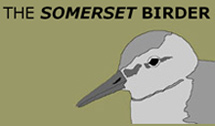Weekly round-up: 11 - 17 July 2012
This week’s weather remained stuck in its rut with cool temperatures and more rain, often torrential, for most. Somewhat bizarrely for mid-July, north-west Scotland remained the place to be for dry, sunny weather. Though the weather performed according to the predictions, sadly (and of course inevitably) only one of my predicted birds for this week turned up!
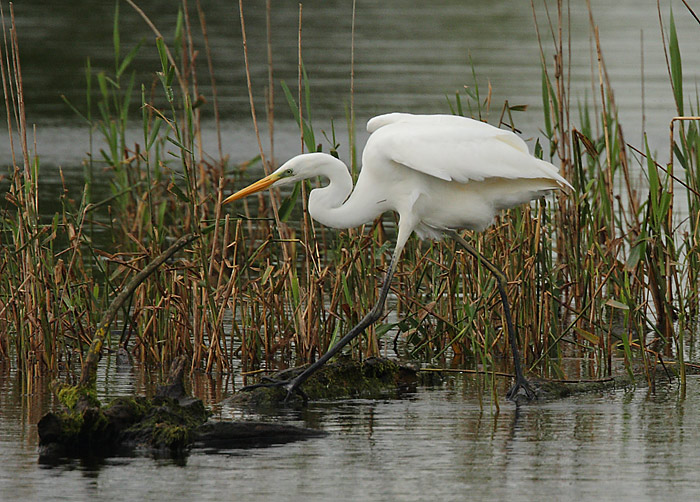
The real headline of the week must be the official announcement of the breeding of not one but two pairs of Great White Egrets at Shapwick Heath, Somerset. With three juveniles fledged from the first nest and another single chick now raised by another pair, this site will soon host quite a flock!
It is worthwhile pausing to reflect on the amazing change in status of this species. In 1950, the beginning of the BBRC era, there were only eight records in Britain. By the end of 1973 there had been a further eight though none had occurred since 1958. Four in 1974 and two in 1977 was described in the 1978 BBRC Report as a ‘flush of records’ though this still remained the the rarest British heron. Occurrences were then annual in the late 1970s and 1980s and by the early 1990s around 6 a year was typical. Since then, however, there has been a rapid and steady increase in records, culminating in the species’ removal from the BBRC list from 2005. By that time the British total had reached 310.
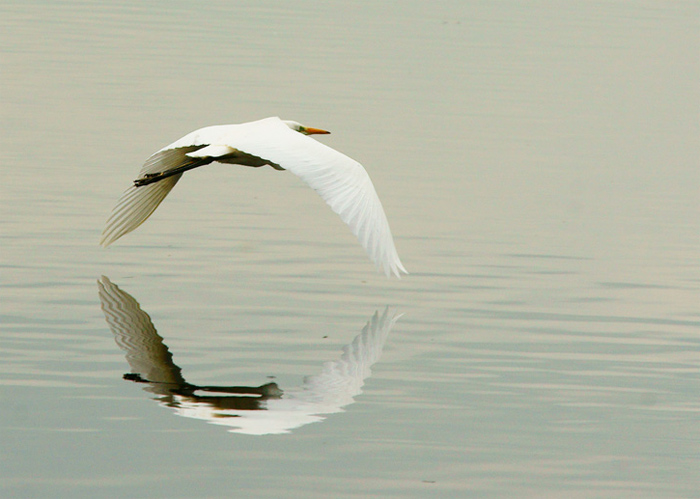
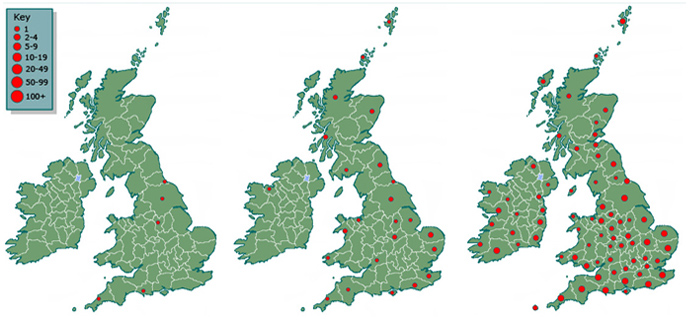
From left to right - map.1 1950-1974, map.2 1975-1991, map.3 1992-2010
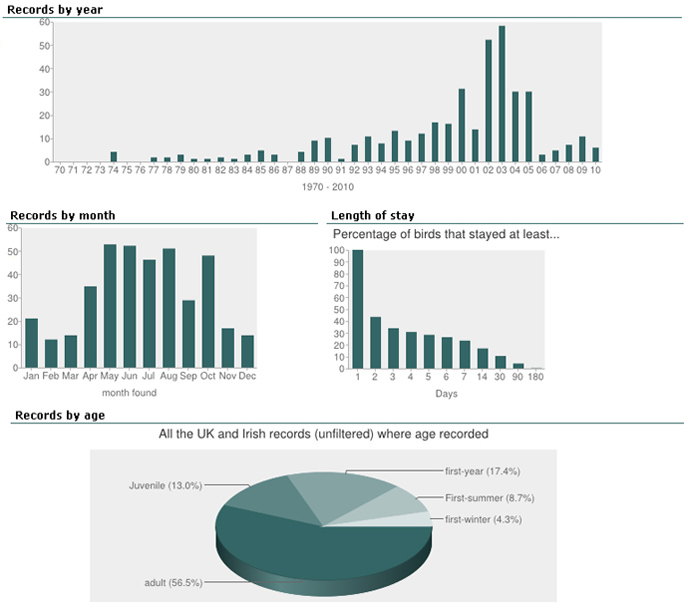
With the ever-increasing breeding and wintering population in the Netherlands, this was a long-tipped breeder so it is heartening to see it following in the footsteps of other recent actual or potential colonists such as Little Egret, Cattle Egret, Little Bittern, Purple Heron and Spoonbill. Glossy Ibis really should be next.
Meanwhile, in Aberdeenshire, a Roller was reported belatedly from near New Pitsligo Aberdeenshire on 12th but it could not be refound on 13th, only to reappear on 14th and 15th. Though of little immediate interest to English birders, many of whom have just gorged on the delightful long-stayer in Yorkshire, this is a rare bird indeed for Scotland. Perhaps surprisingly, it was the eleventh Roller for Aberdeenshire though six of these are nineteenth century records. There were only four in the twentieth century, the most recent being at Grange on 29th May to 3rd June 1974, so this was no doubt a very welcome county tick for most! There must, of course, be a strong possibility that this is the same bird as that in Yorkshire, still continuing its northward journey.
Equally distant for most was the season’s first (though now expected) Fea’s Petrel off Mizen Head, Cork at 0945 on 16th. Though the occurrence of these Pterodroma petrels is increasingly clouded by taxonomic as well as identification issues, this should not detract from what is still a fabulous and exciting find. Fea’s/Zino’s Petrel is of course now an expected feature of autumn with, to the end of 2010, 45 records in Britain and a massive 67 in Ireland, of which Cork alone has amassed no fewer than 31! Most occur from August onwards, however, with only around 10 July records.
Even further away for most, though still deserving a mention in the headlines, was the remarkable summering duo of River and Paddyfield Warblers in Fair Isle’s observatory garden.

While we’re considering birds a long way away, it’s worth being reminded of a host of exciting ‘Eurorarities’ this week - firstly an impressive Scandinavian triple-act of Western Sandpiper in Sweden, White-winged Scoter in Norway and Short-toed Eagle in Finland. With a Griffon Vulture on the border of Denmark and Germany and a Trumpeter Finch as close as Gravelines, France, there was ample evidence that our next big rarity may be only just over the horizon.
This week was much better for seabirds, particularly in the Southwest and in southwest Ireland where 3 Wilson’s Petrels were off a Scilly pelagic on 12th and another on 16th whilst yet another was seen from the ‘Scillonian’ between Cornwall and Scilly on this latter date.
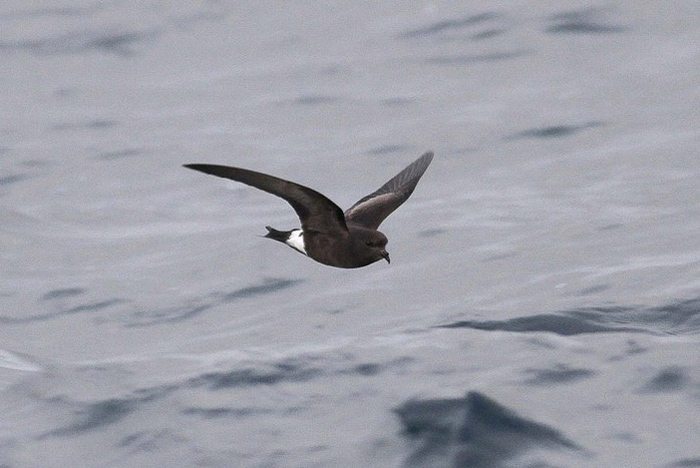
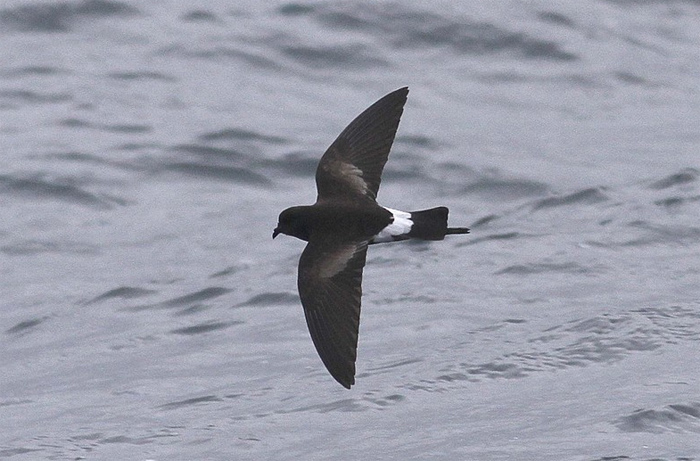
Cory’s Shearwaters were also increasingly in evidence, though in small numbers - firstly off Scilly and Seven Heads, Cork on 12th, Scilly again on 13th, the ‘Scillonian’ between Scilly and Cornwall on 14th, Pendeen, Cornwall (2) and Bridges of Ross, Clare on 15th, Galley Head, Cork, off Inishbofin, Galway, Scilly (4), Mount’s Bay, Cornwall (2) and Start Point, Devon on 16th and Kerry Head, Kerry on 17th.
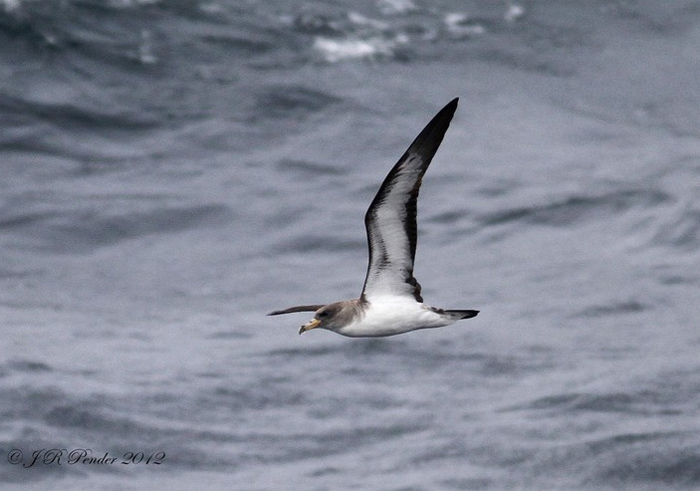
One or two Great Shearwaters were also seen off Cork (with another off Porthgwarra, Cornwall on 17th) and, on the east coast, both Great Shearwater and ‘Blue Fulmar’ passed Flamborough Head, Yorkshire on 13th. Hopefully these will be the forerunners of a decent autumn for ‘large shearwaters’.
A Black Stork flew over Ballyvaughan, Clare on 12th. Ballyvaughan is of course famous for once hosting a long-staying Belted Kingfisher so this stork brought a welcome return to the limelight for this charming small coastal village. White Storks reappeared on the radar again this week with 3 near Templecombe, on the Somerset/Dorset border on 14th to 17th.
Apart from the breeding birds in Somerset, Great White Egrets were also reported at Burton Mere Wetlands, Cheshire on 11th and over Portsmouth, Hampshire on 14th. Glossy Ibises remained in situ at Minsmere/Southwold (Suffolk), Tacumshin (Wexford), Timoleague (Cork), Marloes Mere (Pembrokeshire), Farlington (Hampshire) and Pagham (Sussex) but there was also a flurry of new sightings hinting at a small arrival - over Glastonbury, Somerset on 16th and at Holland Haven Country Park, Essex and Grove Ferry, Kent on 17th
After last week’s blank, England finally produced a rare duck in the shape of an adult drake Ferruginous Duck at Blagdon Lake Somerset from 12th to 17th. Meanwhile, north of the border, all seemed much quieter on the seaduck front in Aberdeenshire, with only one Surf Scoter reported off Blackdog on 14th and 15th.
All was also pretty quiet for birds of prey though the summering Montagu’s Harriers remained near Slaidburn Lancashire and at Tacumshin Wexford. A Montagu’s Harrier also flew south over Port Carlisle, Cumbria on 16th.
Wader action finally stepped up a gear this week with the autumn’s first multiple arrivals of both Pectoral and White-rumped Sandpipers . The former graced Cresswell Pond, Northumberland from 13th to 17th, Cley, Norfolk on 13th to 14th, Earith, Cambridgeshire on 14th, Tacumshin, Wexford on 14th, Titchwell, also Norfolk, on 15th and Holland Haven Country Park, Essex on 16th. New White-rumped Sandpipers were at Kirkby-on-Bain Lincolnshire and Grimley, Worcestershire, both on 14th while the long-staying bird at Frampton Marsh, Lincolnshire was last seen on 12th.
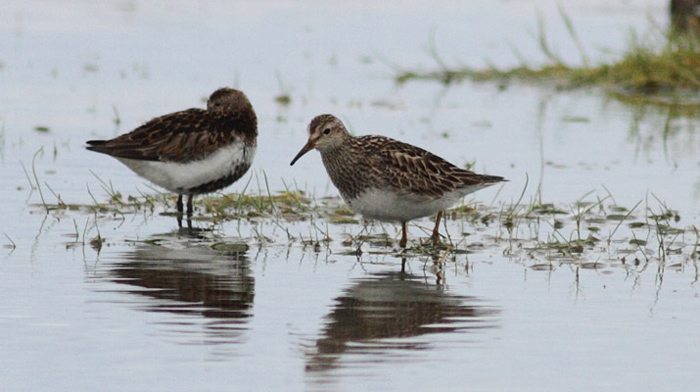
The arrival of these early autumn Pectoral and White-rumped Sandpipers (and their traditional east coast bias) inevitably prompts musings about their origins. Though notionally Nearctic, Pectoral Sandpipers breed well west into Siberia and so may well have accompanied this week’s scatter of Curlew Sandpipers. However, the origins of our early autumn White-rumped Sandpipers present more of a conundrum. This species breeds only in the northernmost parts of North America (predominantly in Arctic Canada) and does not breed west of Bering Strait. Are our birds therefore fresh transatlantic arrivals (perhaps unlikely in view of their appearance on North Sea coasts rather than in the west), have they come on an amazingly long easterly or shorter transpolar route or are they birds which crossed the Atlantic in a previous year and which are now summering somewhere in the northernmost reaches of the Western Palearctic?
Temminck’s Stints also made their first appearance of the autumn with singles creeping about at Rutland Water, Leicestershire on 12th to 14th and at Long Drag, Cleveland on 14th to 17th. Most remarkable of all, perhaps, was the appearance of this summer’s second breeding plumaged Grey Phalarope, this time at Martin Mere, Lancashire on 17th.
There was little in the way of gull excitement with only a handful of Glaucous Gulls (on Skye, Highland on 12th, at Troon, Ayrshire on 16th and at Caerlaverock, Dumfries and Galloway and Barassie, Ayrshire on 17th) and 2 Iceland Gulls (at Moine Mhor Argyll on 13th and Tor Bay, Devon on 14th). A Sabine’s Gull was also off Skye on 14th and 15th and another off Helvick Head, Waterford on 17th whilst the long-staying Ring-billed Gull remained faithful to Groomsport, Down until at least 14th.
There was only one rare tern but it was a good one - a Caspian Tern made two relatively brief appearances at Strumpshaw Fen, Norfolk on the evening of 17th.
A female Snowy Owl was again at The Mullet, Mayo from at least 14th to 17th.
Last week’s Short-toed Lark on Blakeney Point, Norfolk reappeared on 12th and remained in its stony substitute desert until at least 14th whilst, also on 12th, a Woodchat Shrike was at Cemlyn, Anglesey.
A Hoopoe was in the unlikely location of North Tolsta, Lewis, Western Isles on 14th but at least it found some nice weather. Some late spring migrant news from Foula, Shetland featured a Marsh Warbler still present on 5th July and a Subalpine Warbler on 2nd.
Closer to home for most, a super male Red-backed Shrike was discovered near Heathrow at Hayes, London on 11th and remained until at least 17th. The long-staying bird was also at East Chevington, Northumberland until at least 15th.
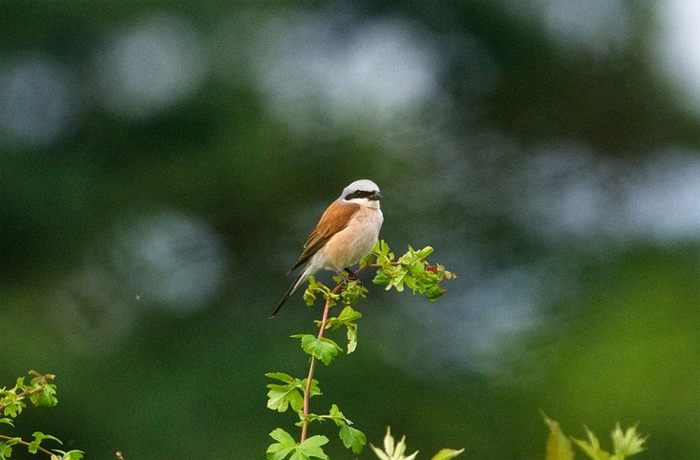
Other lingerers included the Iberian Chiffchaff at Porlock, Somerset until at least 12th and the Serin at Landguard Suffolk to at least 13th. Another Serin was at Dungeness, Kent from 10th to 15th.
Finally, and somewhat out of season, a possible Coues’s Arctic Redpoll was trapped on Fair Isle, Shetland on 14th.
As one of my predictions for this week came true I’ll be tempted (against my better judgement) to make some more. My tips for next week are therefore Sharp-tailed Sandpiper, Red-necked Stint (again) and an ‘orange-billed tern’. However, whatever happens next week, Mark is back and will provide a full report.
Andy Stoddart
18 July 2012




